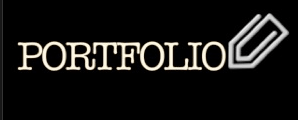
Advertising award shows.
I’ve heard everything there is to say about them. “Advertising awards shows are all about the industry celebrating itself.” “I don’t enter award shows, because they not really about our clients’ business.” Or my favorite one: “It’s just a beauty contest – and the best work really never wins.”
But advertising award shows do matter. They matter on many levels. Here are my top three reasons why award shows matter.
- Celebration of Work. I never understood this complaint. Why shouldn’t we celebrate the work we create? Advertising is like most businesses – we look ahead. Far ahead. We’re currently working on products that won’t launch until 2020 and 2021. When you work on one project for two, three or four years before launch – when your peers recognize it as breakthrough work – damn right we should celebrate. Unlike non-healthcare advertising, we toil for years on a product waiting for clinical trial data to be released. Waiting for the FDA to approve a product (or not). Waiting for the office of OPDP to review our work before it can be published. (By the way – I was going to spell out the acronym OPDP – but then I thought if you don’t know what it stands for – you won’t care.) The healthcare advertising community is incredibly small. Everyone knows everyone else. We enjoy celebrating our friends and co-workers and former co-worker’s successes. If one agency or one campaign elevates the work of the entire healthcare industry – we all benefit.
- Talent. Talent. Adverting award shows help us find, recruit and retain the top creative, planning, account and activation talent from around the world. And in an incredibly small industry – the agency that has the best talent usually wins. How do I know this is true? After Cannes this year – a year when our healthcare network won more awards than ever before – I was contacted by creative talent from all over the globe. London. Dubai. San Paolo. Not to mention New York, Boston, Los Angeles, San Francisco, Chicago and even Columbus, Ohio. I’ve also had students emailing from all the top portfolio schools. Never before has working in healthcare advertising been viewed equally as working in non-healthcare advertising. It was only 4 years ago when I did a poll among college students entering the workforce. At that time 89% of advertising students said they would only work in healthcare advertising if they had no other choice. Clearly that has changed. Finding the best talent has become (slightly) easier. And by continuing to create amazing work will hopefully keep them.
- Award shows motivate us to create better work. We hate losing. When was the last time you heard a co-worker say ‘I don’t want to win new business?’ That never happens. As creative people we want to win all the time. So when our work doesn’t win in award shows – we don’t say ‘I don’t want to win awards’ – we say ‘Damn, that work was better – what do I have to do to make my work better.” By elevating the work, by challenging our own processes, by understanding what makes people change behavior all over the world, by not settling for just something that’s really good but great – that what makes us excited to come to work every day. And those nuggets can be found everywhere. In the back room of a focus group. Deep within a products data. By spending time listening or observing trends online. By looking at new thinking in other industries. By recognizing that you don’t have it all figured out. Award shows make us challenge everything. Because we want to be the best in the world. And we hate losing.
So, if you’re one of the people who think that award shows don’t matter, don’t enter. Just know that while you may be saving the entry fees, you’re also missing the opportunities. To shine. To inspire. To elevate an industry.
rl
1.10.18


 I learned a lot (so far — I’m not finished). The most important thing I learned was location is everything. The first few meetings I held in my office — and they felt a little forced. Not relaxed. Not free-flowing. And that’s when I realized — I had to move the meeting from my office to a neutral location. Coming to my office felt like you were being summoned to the Vice Principals office. Something bad was coming. Everyone was waiting for the other shoe to drop.
I learned a lot (so far — I’m not finished). The most important thing I learned was location is everything. The first few meetings I held in my office — and they felt a little forced. Not relaxed. Not free-flowing. And that’s when I realized — I had to move the meeting from my office to a neutral location. Coming to my office felt like you were being summoned to the Vice Principals office. Something bad was coming. Everyone was waiting for the other shoe to drop.


